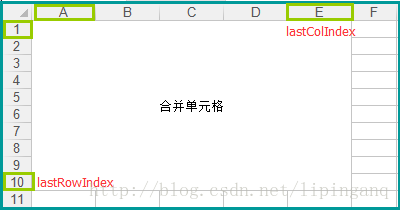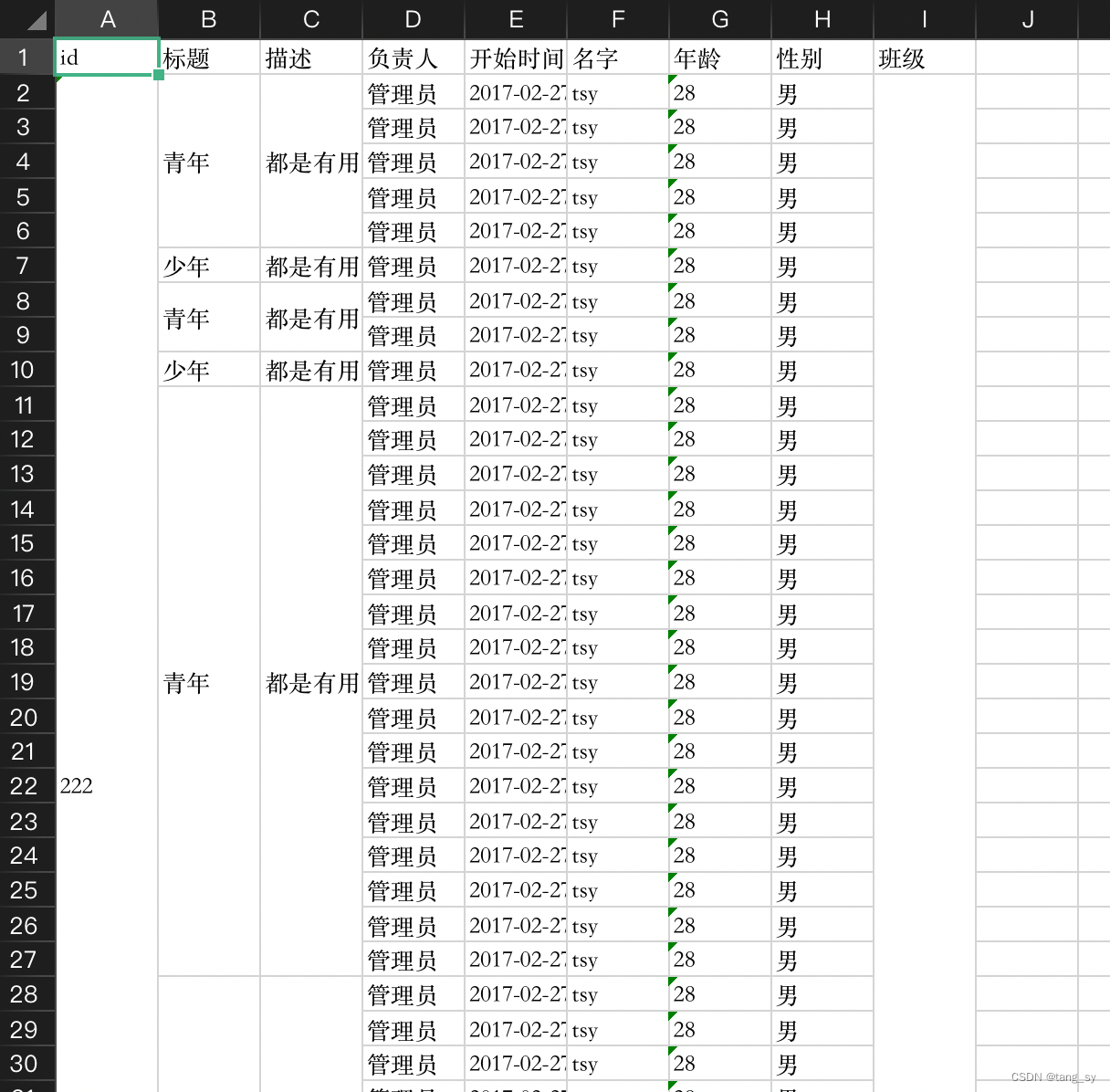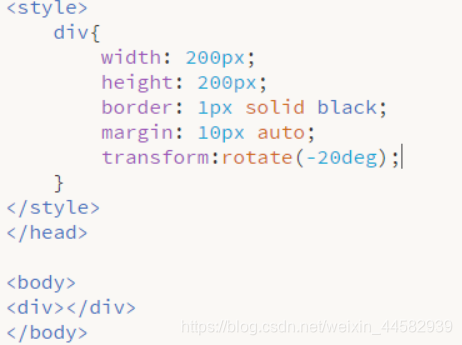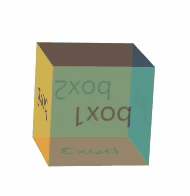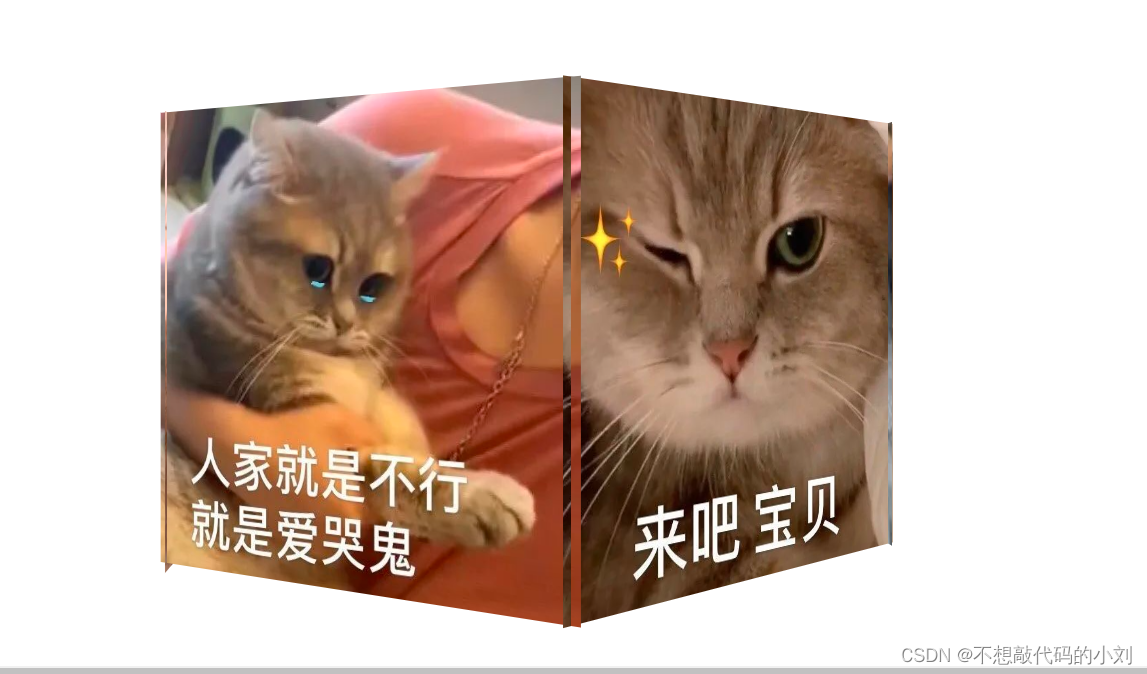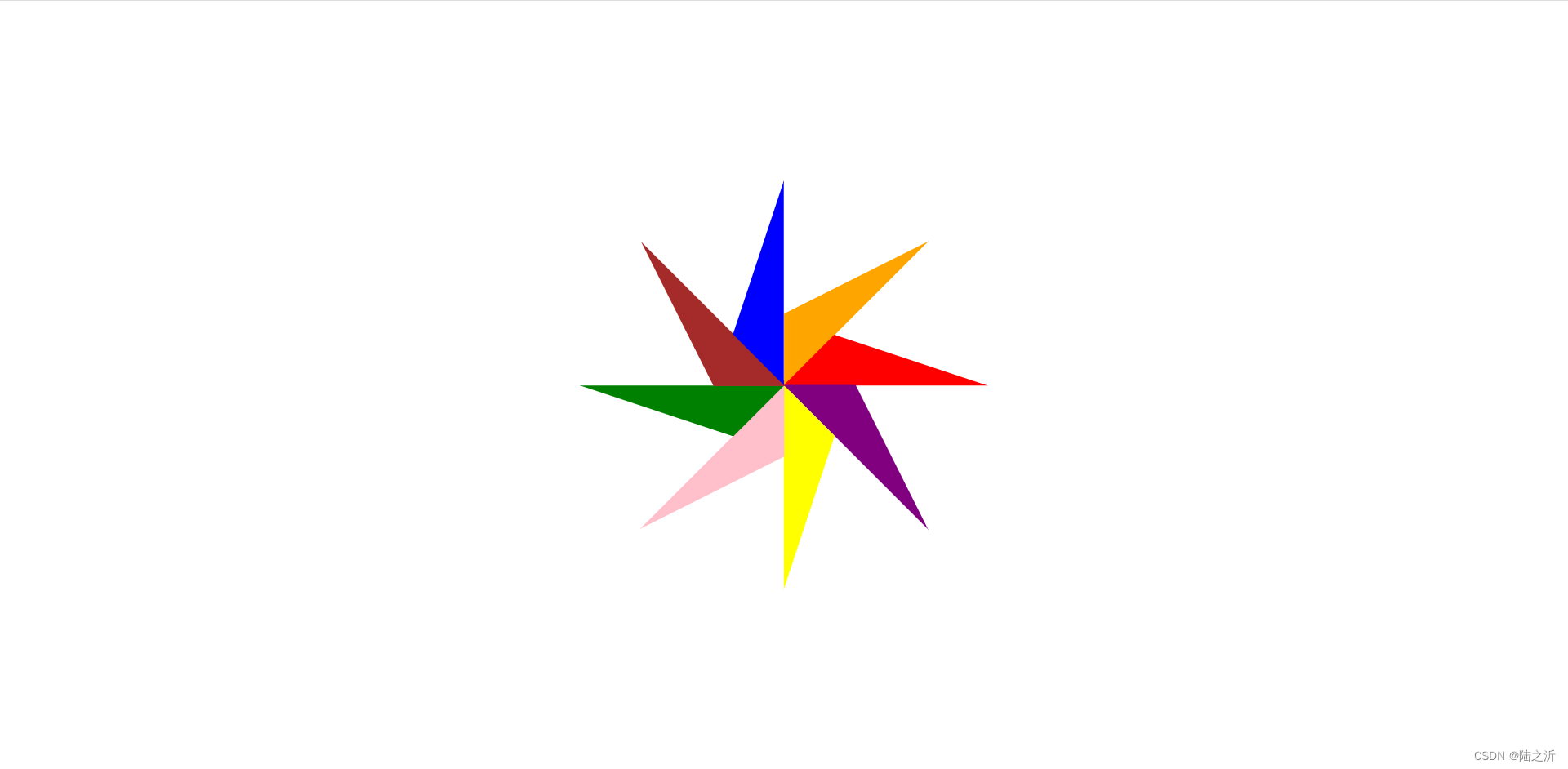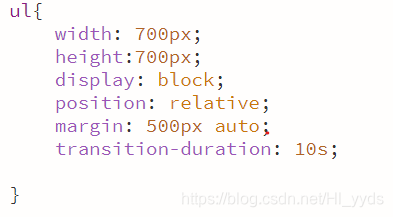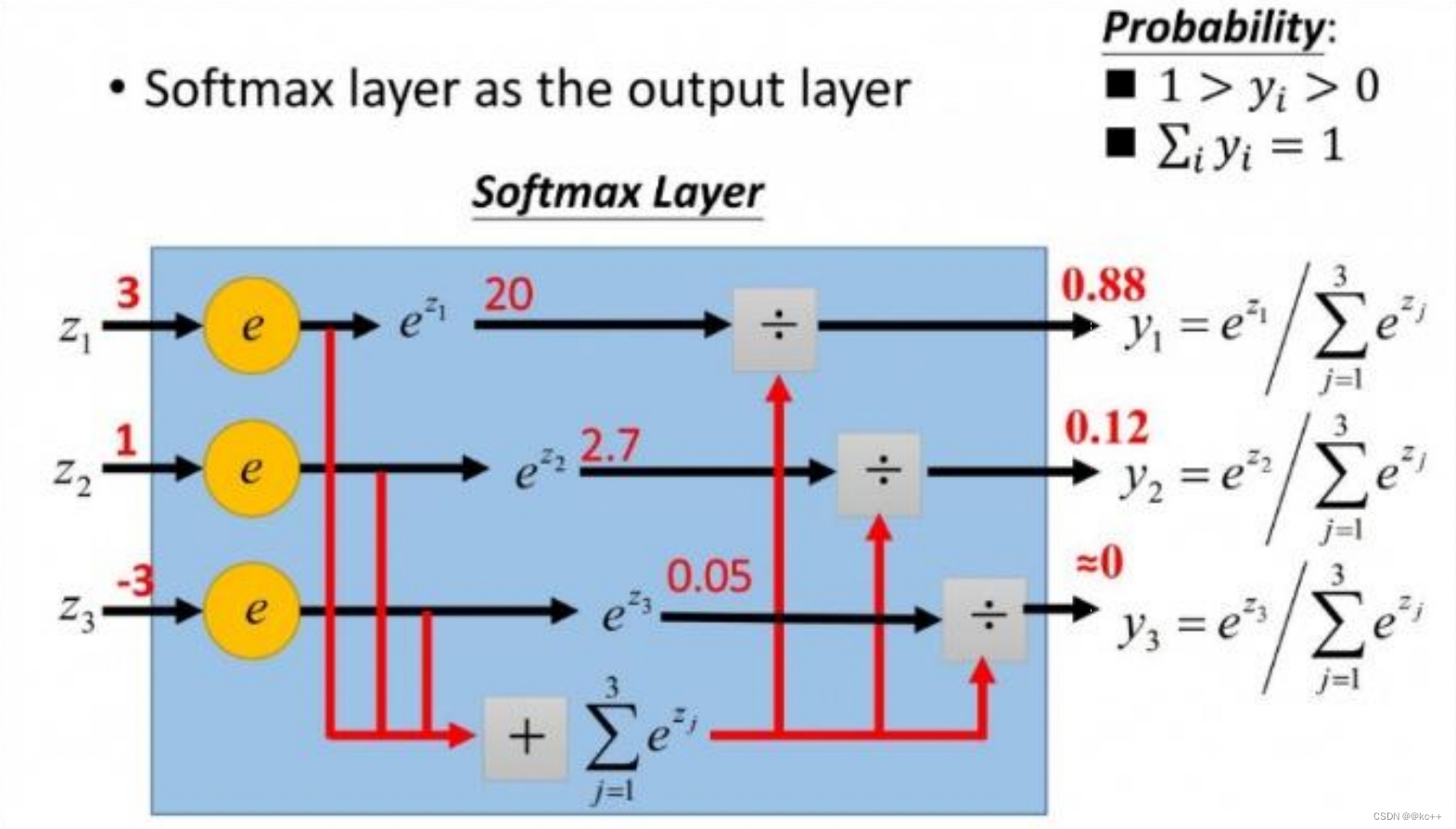1. 合并单元格概述
合并单元格CellRangeAddress就是将几个相邻的单元格合并为一个单元格,即使没有创建过行和单元格,也 可以创建合并单元格,因为单元格信息是单独存储的
/*** Creates new cell range. base 0* * @param firstRow Index of first row* @param lastRow Index of last row (inclusive), must be equal to or larger than {@code firstRow}* @param firstCol Index of first column* @param lastCol Index of last column (inclusive), must be equal to or larger than {@code firstCol}*/public CellRangeAddress(int firstRow, int lastRow, int firstCol, int lastCol)2. 创建合并单元格
创建合并单元格很简单:
1. 创建一个合并单元格region2. 将region添加到工作表Sheet中CellRangeAddress region = new CellRangeAddress(firstRow, lastRow, firstCol, lastCol);
CellRangeAddress region = new CellRangeAddress("A1:E10");
sheet.addMergedRegion(region)3. 合并单元格内容
合并单元格的内容需要通过设置合并区域左上角单元格的内容确定,设置合并区域内其他单元格是不起效的
上图中需要设置A1单元格内容才是设置合并的那远哥的内容
Cell cell = sheet.createRow(0).createCell(0);
cell.setCellValue("合并单元格");4. 实例
package hssf.sheet.cell;import java.io.BufferedOutputStream;
import java.io.File;
import java.io.FileOutputStream;import org.apache.poi.hssf.usermodel.HSSFWorkbook;
import org.apache.poi.hssf.usermodel.HSSFSheet;
import org.apache.poi.hssf.usermodel.HSSFCell;
import org.apache.poi.ss.usermodel.Cell;
import org.apache.poi.ss.usermodel.HorizontalAlignment;
import org.apache.poi.ss.usermodel.Sheet;
import org.apache.poi.ss.usermodel.VerticalAlignment;
import org.apache.poi.ss.usermodel.BorderStyle;
import org.apache.poi.ss.usermodel.IndexedColors;
import org.apache.poi.ss.usermodel.Workbook;
import org.apache.poi.ss.util.CellRangeAddress;
import org.apache.poi.ss.util.CellUtil;
import org.apache.poi.ss.util.RegionUtil;
import org.apache.poi.ss.util.WorkbookUtil;/*** 合并单元格* 1.创建一个合并单元格* 2.设置合并单元格内容* 3.设置合并单元格边框样式* */
public class ExportRegionCell {public static void main(String[] args) throws Exception {File file = new File("C:\\Users\\Administrator\\Desktop\\test.xls");if (file.exists()) {file.delete();}BufferedOutputStream out = null;try {out = new BufferedOutputStream(new FileOutputStream("C:\\Users\\Administrator\\Desktop\\test.xls"));exportExcel(out);} finally {out.close();}}private static void exportExcel(BufferedOutputStream out) throws Exception {Workbook workbook = new HSSFWorkbook();
// Workbook workbook = new XSSFWorkbook();String safeSheetName = WorkbookUtil.createSafeSheetName("合并单元格");Sheet sheet = workbook.createSheet(safeSheetName);// 1.创建一个合并单元格
// CellRangeAddress region = new CellRangeAddress(0, 9, 0, 4);CellRangeAddress region = CellRangeAddress.valueOf("A1:E10");sheet.addMergedRegion(region);// 2.设置合并单元格内容Cell cell = sheet.createRow(0).createCell(0);cell.setCellValue("合并单元格");// 设置单元格内容水平垂直居中CellUtil.setAlignment(cell, HorizontalAlignment.CENTER);CellUtil.setVerticalAlignment(cell, VerticalAlignment.CENTER);// 3.设置合并单元格边框setBorderStyle(sheet, region);workbook.write(out);}/*** 设置合并单元格边框 - 线条* */private static void setBorderStyle(Sheet sheet, CellRangeAddress region) {// 合并单元格左边框样式RegionUtil.setBorderLeft(BorderStyle.THICK, region, sheet);RegionUtil.setLeftBorderColor(IndexedColors.LIGHT_BLUE.getIndex(), region, sheet);// 合并单元格上边框样式RegionUtil.setBorderTop(BorderStyle.THICK, region, sheet);RegionUtil.setTopBorderColor(IndexedColors.LIGHT_ORANGE.getIndex(), region, sheet);// 合并单元格右边框样式RegionUtil.setBorderRight(BorderStyle.THICK, region, sheet);RegionUtil.setRightBorderColor(IndexedColors.LIGHT_BLUE.getIndex(), region, sheet);// 合并单元格下边框样式RegionUtil.setBorderBottom(BorderStyle.THICK, region, sheet);RegionUtil.setBottomBorderColor(IndexedColors.LIGHT_ORANGE.getIndex(), region, sheet);}
}截图:
